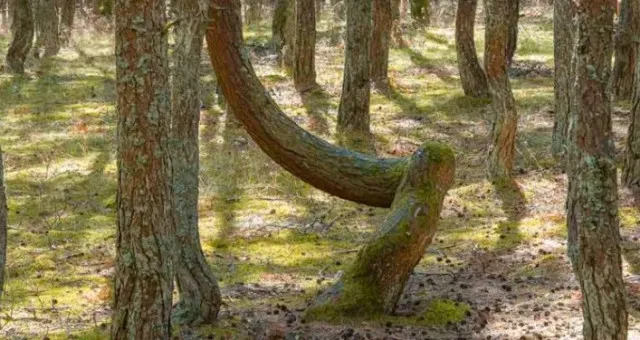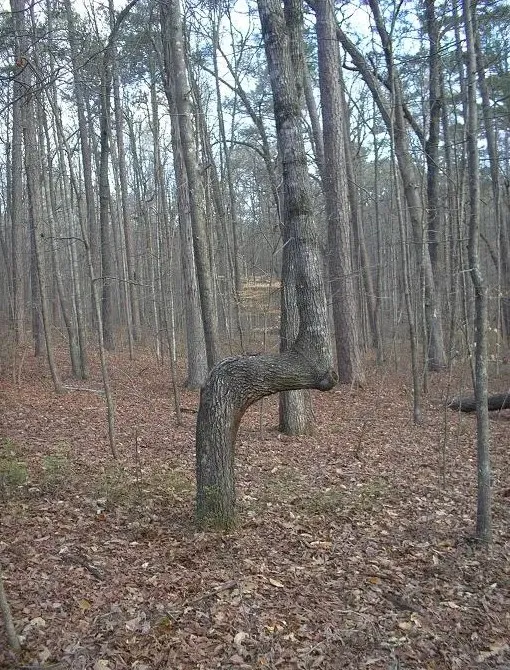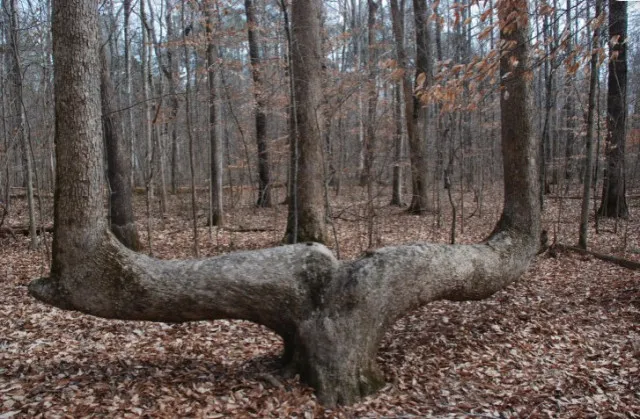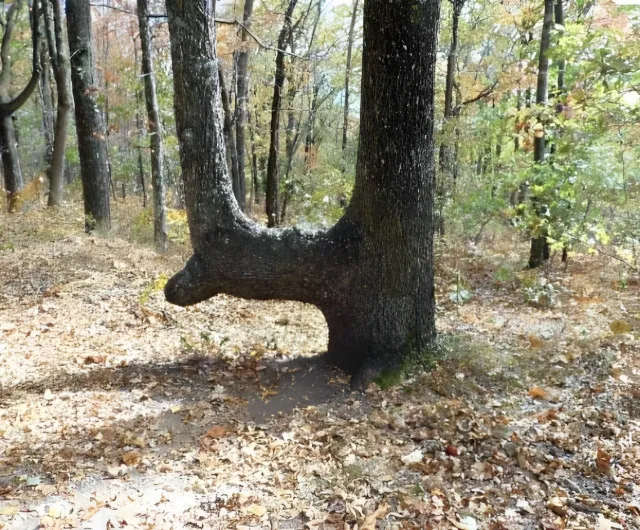People are learning that bent trees in the forest were deliberately shaped by Native Americans to serve as important markers.
These unique trees are catching attention for their historical and cultural significance.
Historically, these bent trees were not just natural oddities; they carried deep meanings and were deliberately shaped by Native Americans.

What are bent trees?
People intentionally bend or shape trees to create unusual forms.
These trees often twist or curve in seemingly unnatural ways.
You can find many of these trees in North American forests, and they vary greatly in appearance.
The bending is not the result of natural growth but is rather a result of human intervention.

Who made the bent trees?
Native American tribes used bent trees as markers or guides.
They shaped these trees carefully to mark trails, indicate important locations, or direct people to water sources.
They acted as a form of communication and navigation for people traveling through dense forests.
These bent trees pointed the way to vital resources like rivers, medicinal plants, and gathering sites.

How did people shape these trees?
To create these trees, Native Americans used a combination of tools and techniques.
The practice of shaping trees dates back centuries among various tribes across North America.
Native peoples would identify a young, flexible sapling and carefully bend it in the direction they wanted to mark.

Using vines, bark, or even rocks, they would secure the sapling in its new position.
Over time, the tree would grow and lock into the angled shape, creating a permanent landmark.
These trees are studied more in modern-day
In recent years, there has been a growing interest in understanding these bent trees.
Researchers and historians are now studying them to learn more about their significance.
While the precise number is unknown, experts believe thousands of these modified trees once existed across the US.

They are gradually getting rid of due to land development and deforestation
However, as land development and deforestation swept the country, many of these ancient signposts disappeared.
Today, people believe that only a few hundred remain.
Local communities protect many famous bent trees.

In Gilmer County, Georgia, residents preserve a tall oak tree used by Appalachian tribes.
Furthermore, in Traverse City, Michigan, people have fenced off a historic “White Oak” trail tree and hold ceremonies for it.
In Indiana, the owners carefully look after two oak trail trees on their private land.